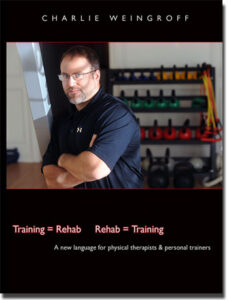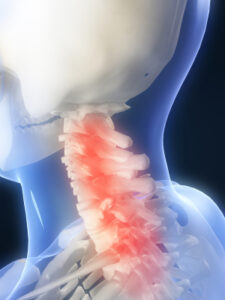Review of Rehab=Training, Training=Rehab: Top 10 Takeaways – Part 1
I wrote yesterday about how fantastic I think Charlie Weingroff’s new DVD set, Rehab=Training, Training=Rehab is. Now that it’s on sale, I thought I’d use my next few posts to highlight the top ten key points he made that really stood out in my mind. Here are the first five.
1. I hear people saying all the time that they need to find a niche – and I’ve written in the past about how I found my own niche. As Weingroff points out, we’re all working with the same platform and set of rules: how the body works. A “niche” just comes about because we get good with working with those rules in specific populations to create a subspecialty. I train baseball players using my unique methodology, but there are others out there getting results in this population with different modalities, too, because they’re performed correctly and these folks keep the original set of rules in mind. Likewise, there are folks with similar thought processes as mine – and they’re getting results in populations outside of the baseball world.
The take-home message on this point is that if you want to be a specialist in your niche, you need to understand general principles first.
2. We’re always trying to find the “link” between terrible movement and pathology/diagnosis – and Charlie offered a good perspective in light of the joint-by-joint theory of movement (a central piece of his two-day presentation). When mobile joints become stable, we get degenerative changes (arthritis) and poor recovery. When stable joints become mobile, we end up with dislocations, positional faults, muscle strains, and disc herniations. Want to prevent or address these issues? Work backward along this line of logic with your corrective exercise strategy.
3. Speaking of the joint-by-joint approach, Charlie offered the most comprehensive approach I’ve seen. Traditionally, this approach has been discussed largely in the context of the sagittal plane only, but it definitely has frontal and transverse plane implications as well. Weingroff also went into more detail on the neck and foot than I’ve seen – as you have alternating mobile/stable joints within these entities, too.
4. Typically, a joint in this school of thought will only really have two direct impacts: the joint above it and the one below it. The hip might impact the knee or lumbar spine, for instance.
The thoracic spine, however, has more far-reaching effects, though, and that’s likely why it’s such a crucial area of focus. It affects four systems: the neck, ribs (respiration), scapula/clavicle, and the lumbar spine. So, if you’re seeing a lot of “gross” dysfunction above the hips, it’s often the best place to start with your corrective exercise.
5. Charlie goes to some great lengths in defense of the vertical shin (tibia) as compared to the angled shin during various tasks, most notably squatting. He raises an interesting question in asking whether it’s really a good thing for both the femur and tibia to move simultaneously during the angled shin squat – as it essentially works in contrast to the joint by joint theory of movement he proposes.
Meanwhile, almost every day, we see folks whose knee pain disappears when we teach them to squat with a vertical shin – effectively letting the femur move as the tibia stays still. The same goes for teaching folks to deadlift, do pull-throughs, or anything else that emphasizes “hips back” as opposed to “knees forward.”
Admittedly, Charlie says it much better than I do, though! And, I should note that he emphasizes mastering the movement far more than simply loading it up – especially if we are talking about loading up a dysfunctional pattern (not a good idea).
I’ll be back with five more takeaways tomorrow, but in the meantime, check out Charlie Weingroff’s Rehab=Training, Training=Rehab at the introductory price HERE.
Sign-up Today for our FREE Newsletter:




